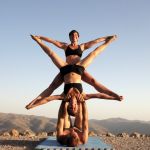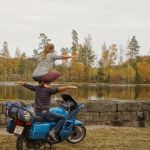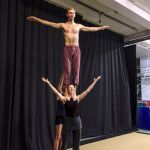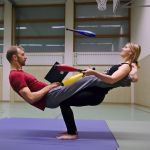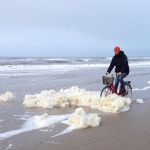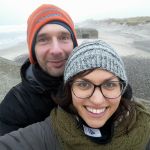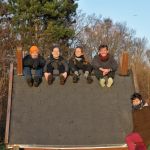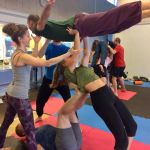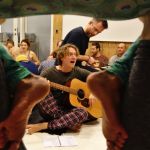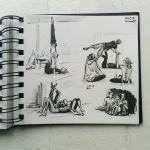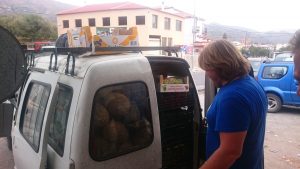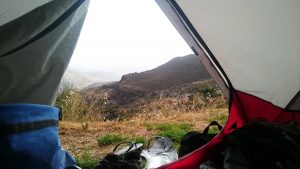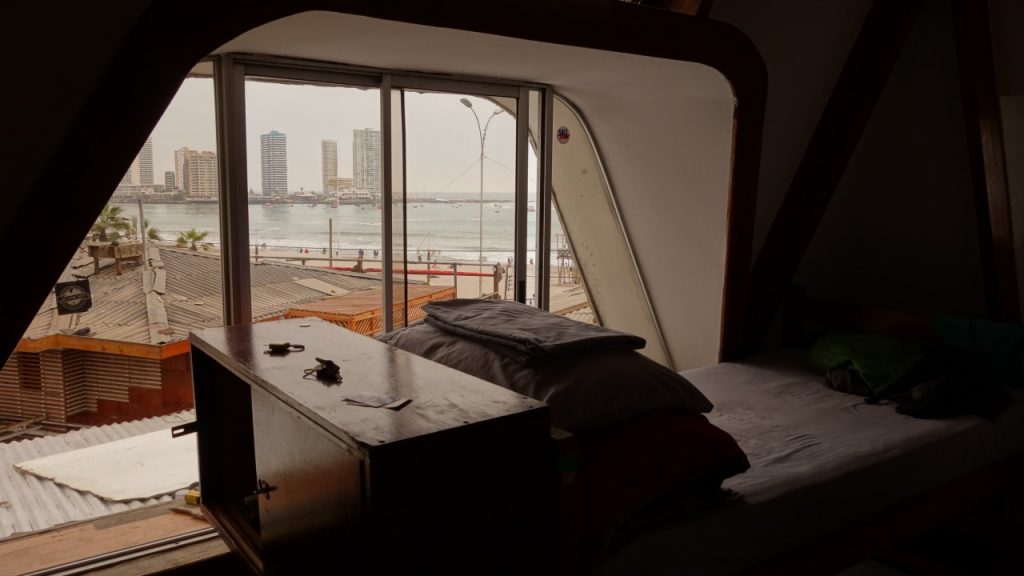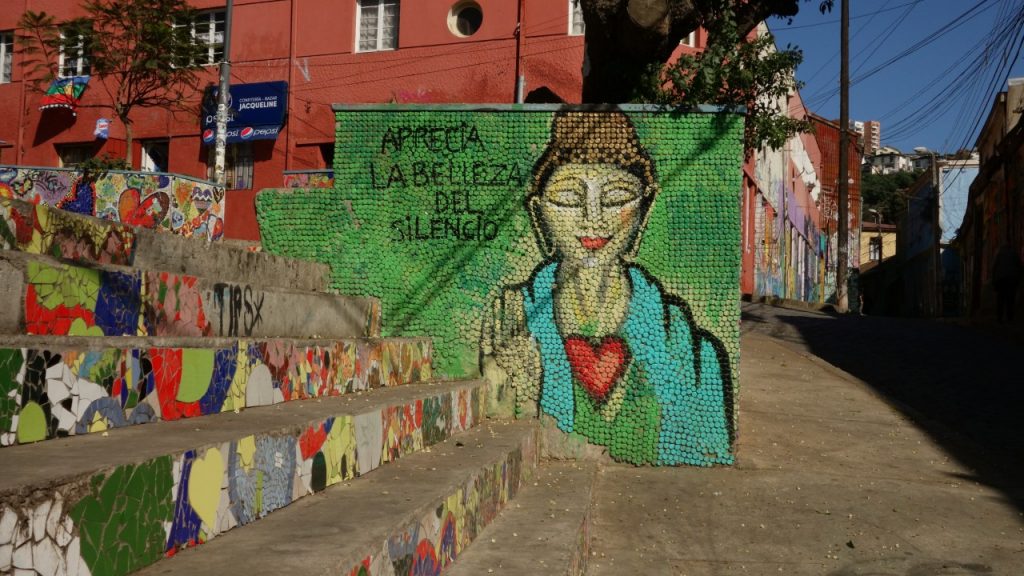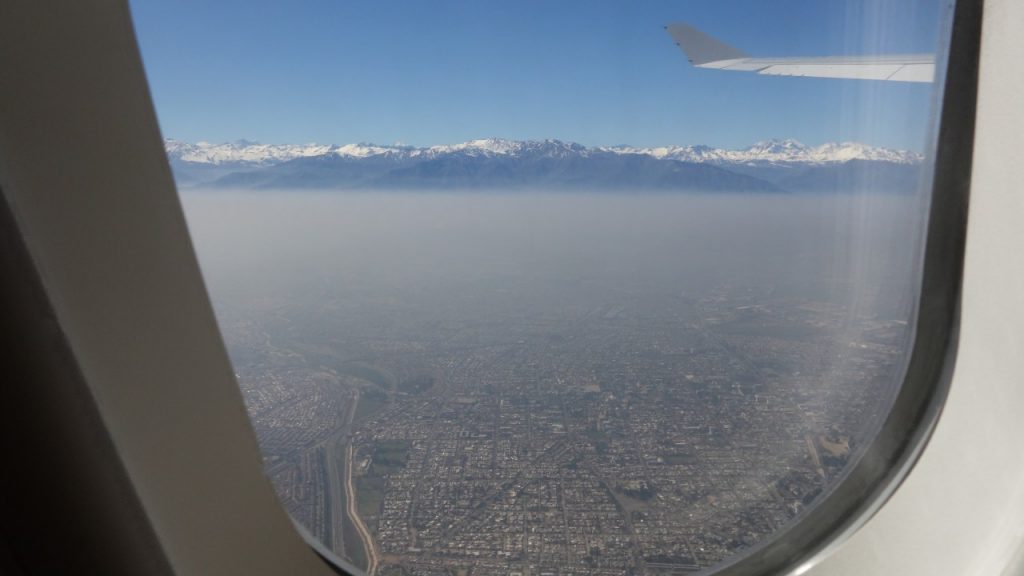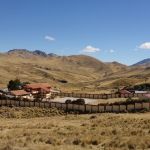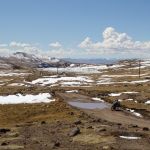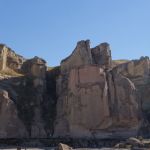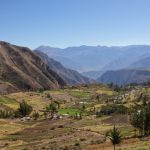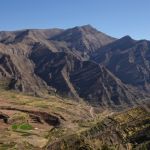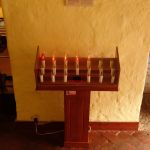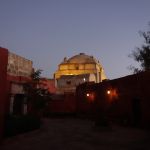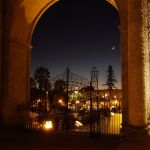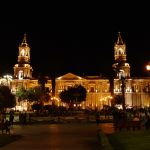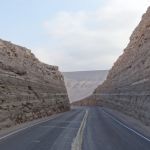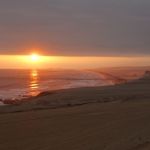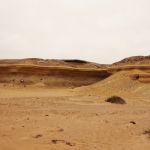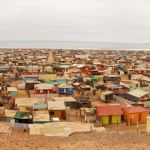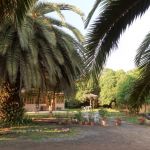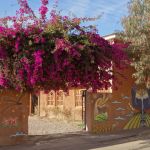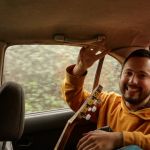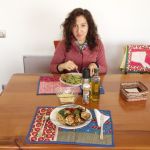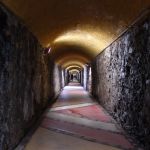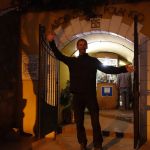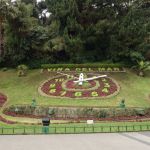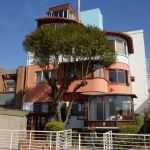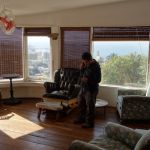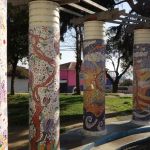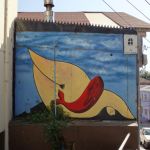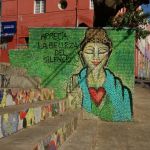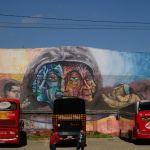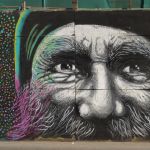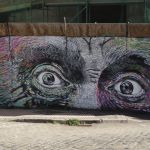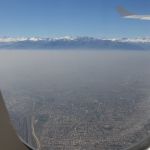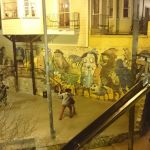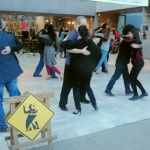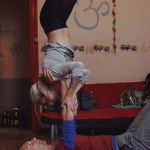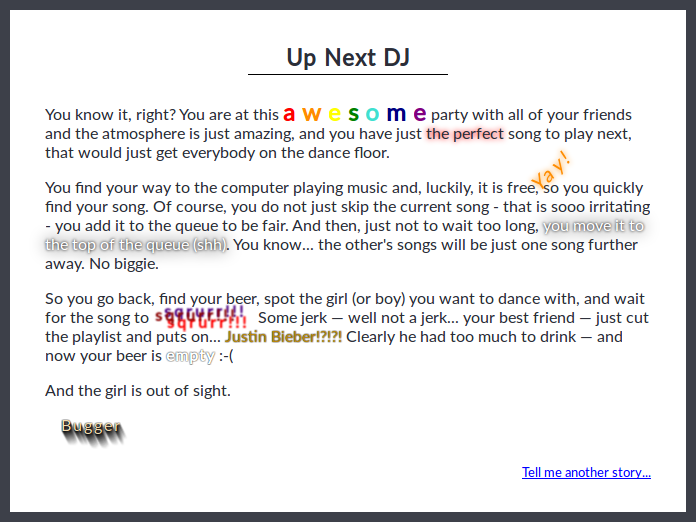Posts in Category: Stories
Switching to Signal
The very short version:
I am uninstalling Facebook Messenger switching to Signal on my phone. I will still be checking Messenger, but only when I am logged in on a computer. If you want to catch me on-the-go, Signal is the way to go 📱
That was it. If you have other things to do, feel free to leave. If you are curious why, then read on 😊
But… why?
Well.. for a number of reasons. Signal is…
- ad free.
- The project is run by a non-profit foundation.
- They accept donations / support to keep it running.
- open source.
- end-to-end encrypted.
Let’s dive just a bit more into details…
First: It is ad free
This was the initiating ball for me. For many years, I have been using the Messenger Lite app from Facebook / Meta. It was ad free and had way less features than the full app. Features I did not mind missing out on.
However, from September 18th 2023, Messenger Lite will be shut down, and one has to install the full Messenger app – including ads – in order to use the service (on the phone). I would like to keep my day-to-day life as ad-free as possible and thus will not be installing the full app.
One argument for accepting ads in your day-to-day life is that it is part of the internet economy. I see that, but I also envision a better way. Without going in to this discussion here, I will just note that the Signal app offers the possibility to donate to / support the app.
Second: It is open source
This is great because it gives three important benefits to the project:
- It can be peer reviewed. So when they claim that it is end-to-end encrypted and done so securely, people can review the code and verify it for themselves. One example of this is the cross-institutional audit A Formal Security Analysis of the Signal Messaging Protocol.
- If you find a bug, or if you want to contribute with a feature to the app, then you can do so via pull requests. Yes, I know… not everybody know how to write software… but those of you who do…
- If the projects is ever shut down (or taken in an unwanted direction), in theory it can be forked (copied) and started up again. I know… then you have to migrate users and stuff… but with proprietary software you are completely starting from scratch.
Third: End-to-end encryption
It may not be something you think about in your day-to-day life and some would argue that I have nothing to hide. I don’t want to go into a deep debate here, but I have been stumbling upon a few quotes that made me favor 100% on the pro-encryption side:
- Arguing that you don’t care about the right to privacy because you have nothing to hide, is no different than saying you don’t care about free speech because you have nothing to say. – Edward Snowden
- Because a citizenry’s freedoms are interdependent, to surrender your own privacy is really to surrender everyone’s. Saying that you don’t need or want privacy because you have nothing to hide is to assume that no-one should have or could have to hide anything. – comment on Hacker New
But what about WhatsApp and Telegram?
Good questions…
WhatsApp is owned by Meta / Facebook and thus, I believe, it is only a matter of time before they “need” to start monetizing that investment.
Telegram is owned / run by the Russian-born brothers Nikolai and Pavel Durov. While they did move out of Russia it still does raise a flag. Also, Wikipedia writes that Since 2017, the company has been based in Dubai. It has a complex corporate structure of shell companies to delay complying with government subpoenas. [Quoted by this article from The New York Times, that is unfortunately hidden behind a paywall.] I am unsure whether the subpoenas in question are from Russia, or from other (western) countries. However, it does not sound promising either way.
So… while I can be found on WhatsApp and Telegram, I prefer to make (what I deem to be) the right choice from the start 😊

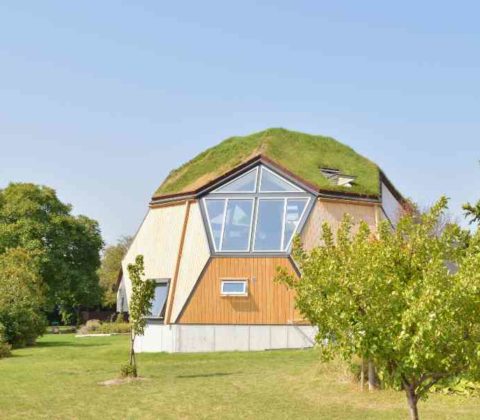
Mit drømmehjem – og om det at starte nyt
Jeg går lidt og drømmer om at bo i kollektiv. Eller bofællesskab. Navnet betyder ikke så meget, men folk har mange (forskellige) værdier knyttet til hvert af de ord og jeg ved derfor ikke altid hvad jeg skal vælge at bruge.
Jeg har haft drømmen nogle år, men det er ikke rigtig blevet til noget. Dels pga. det ikke passede ind i hvor jeg var i livet, dels fordi jeg oplever at det er svært at finde mit drømmekollektiv eller -bofællesskab – og derefter at komme igennem nåleøjet og komme ind. Især hvis man gerne vil bo i eksempelvis Aarhus 🙂
Men nu er det ikke helt min stil at give op, og derfor gør jeg nu forsøget med at søsætte et nyt projekt; et projekt om at skabe det hjem hvor jeg gerne selv vil bo – uanset om det så ender på -tiv eller -skab 😀
Det jeg drømmer om…
… er mange ting, men her er et par af dem 🙂 Jeg er også udmærket klar over at det er svært at få alt. Der er mange kompromiser der skal tages og måske et par kreative løsninger der skal udtænkes. Men altså… her mine drømme:
Jeg søger ikke kollektiv fordi det skal være billigt, men fordi jeg ser muligheder i at dele nogle gode fællesarealer med andre. Eksempelvis er et højt ønske for mig at have et træningsrum (med fysisk højt til loftet) hvor jeg kan dyrke yoga, akroyoga, akrobatik, håndstand, kontakt-impro, og anden bevægelse.
Men “højt til loftet” er ikke nødvendigvis kun i fysisk forstand. Der er mange ting man kunne lave i et stort fysisk rum. Stuekoncerter, store madklubber, teater-impro, kakao-ceremonier, bogklubber eller andet…?
Jeg ser mig selv som introvert og har brug for alenetid, men nyder også at være en del af et socialt fællesskab. Både i hverdagen og hverdagssnakken over køkkenbordet, men også med venner og gæster der kan give nyt input i ens liv. Derfor kunne jeg godt tænke mig at skabe et kollektiv, hvor der er rum til at man kan lukke sin dør, men også gode rammer for hygge, fællesskab og gæster.
I forlængelse af “et hjem hvor der er plads”, ville det også være fedt med et gæsteværelse, således man kan have familier og venner på besøg. Man kunne også overveje couch surfing eller airbnb.
Ja; den er svær. Det er det alle ønsker🤦
Mit fokus i lokationssøgningen har været indtil videre “cykelafstand fra Aarhus C” – og det i sig selv kan jo gradbøjes. Men jeg er ikke blind for at det måske også kunne opnås ved at bosætte sig længere væk, men tæt på en togstation. Eksemplevis har jeg kigget lidt på Vejle, Horsens og Silkeborg. Der er også Ry, Alken og Laven – men de er vist også lidt svære / dyre at komme i nærheden af….
Jeg er blevet lidt forelsket. Se nedenfor ♡
Jeg har ikke selv stiftet familie endnu, men det er noget jeg gerne vil i de kommende år. Jeg er klar over at det at have børn i hjemmet (måske især andres børn?) kan være en udfordring, men jeg vil gerne skabe nogle rammer hvor det kan fungere. Dels ville jeg synes det ville være super ærgerligt at være tvunget til at flytte, når/hvis jeg selv får børn. Dels har jeg gode venner og interessante mennesker i mit liv som har børn, og det ville være super ærgerligt at forhåndsudelukke dem fra dette projekt blot på den baggrund. Derudover har jeg en idé med kuppelhuse som måske kan være en del af løsningen.
Jeg har ikke noget endnu, men det ville da være fedt ♥ Jeg har spillet klaver siden 3. klasse og guitar siden 8. og det ville være fedt om sang og musik kunne være en større del af min voksne hverdag.
Som sagt; ovenstående er ikke en kravliste men er mere tænkt til at give et billede af hvad det er for et hjem, jeg drømmer om. Der kan være mange forskellige måder at løse de enkelte ønsker på, og selvfølgelig skal man også være indstillet på at indgå kompromiser når man starter noget fælles op.
Kuppelhuse
I min jagt på det gode hus (og i overvejelserne om at købe eksisterende hus eller bygge nyt) er jeg faldet over kuppelhusene – og blevet lidt forelsket. Derfor vil jeg gerne pitche idéen om at bygge “selv” og at bygge kuppelhuse.
Jeg har haft lidt kig på Easy Domes som en mulighed – jeg synes de er super fede. Lavet i træ, med store vinduer og med højt til loftet – som selvfølgelig kan udnyttes på mange måder.
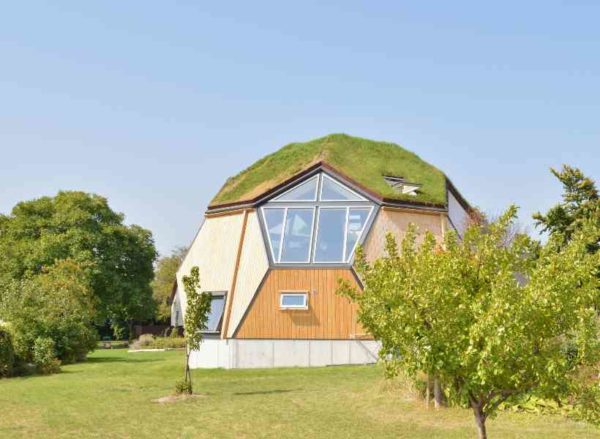
Easy Domes sælger kuppelhuse i forskellige størrelser. Jeg har leget lidt med at tegne et par kupler ind på en godt 1000m² grund (i Aarhus) for at se hvordan det ser ud:
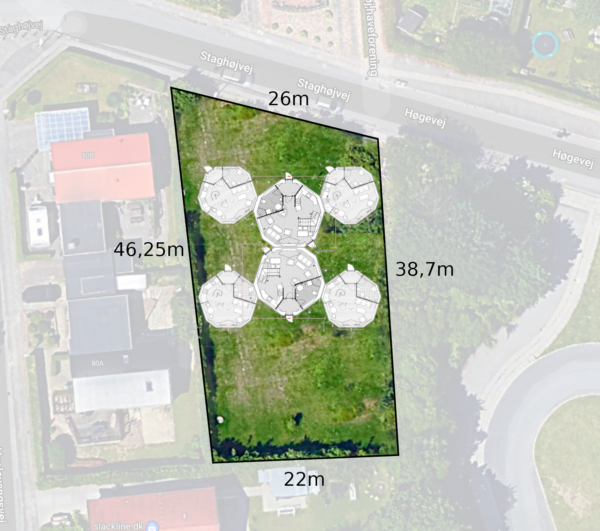
Der er selvfølgelig mange ting at tage hensyn til – ikke mindst lokalplaner og regulativer – og kuplerne kan helt sikkert placeres bedre end min meget hurtige indsætning. Men tanken er
- 2 “store” kupler (ca. 72m² beboelsesareal) der kan fungere som fællesrum. Dvs. køkken, bryggers, hyggestue, og (selvfølgelig) træningsrum.
- 4 “medium” kupler (ca. 44m²) som kan fungere som beboelse. Medium-kuplerne er stadig høje nok til at kunne have en 1. sal, så jeg forestiller mig at man kan have 2 eller 3 værelser efter behov. Dette kan tilpasses til at huse eks. 2 singler, eller måske en lille familie.
- Jeg er lidt i tvivl om jeg synes det er bedst at have bad/toilet i hvert af beboelseskuplerne, eller om de skal være i fælleskuplerne.
Dette giver et kollektiv-størrelse på 8 personer – måske lidt flere hvis der er børn. Måske lidt færre hvis vi vil prioritere gæsteværelse, et ekstra kontor, eller andet.
Økonomi og alt det praktiske
Der dukker straks en masse spørgsmål op – og mange af dem er der ikke endelige svar på. Det er det vi skal finde ud af sammen. Men jeg har gjort mig et par tanker (over de spørgsmål jeg tænker er klassiske) og svaret lidt løst nedenfor.
Klik på overskrifterne for at se mere.
Ja, det kommer jo helt an på hvad vi køber, hvor mange mennesker vi er om at bære, hvilken finansieringsmodel vi vælger – og selvfølgelig hvad bankerne / realkredit’erne er med på.
Jeg har dog regnet lidt løst på det for lige selv at få en fornemmelse af det. I de to følgende bokse har jeg gjort mig et par tanker om hvilken prisklasse vi kunne være i:
Her er et par priseksempler fra et par byer:
- Brabrand, flot hus med søudsigt og 5 værelser samt 2 gode stuer.
Træværket har brug for en kærlig hånd, der er en nedgravet olietank, og letbanen kan måske spise noget af haven.
Pris: 4,75mio kr.
https://www.edc.dk/alle-boliger/brabrand/8220/silkeborgvej-592/ - Virklund, Silkeborg, naturskønt område, 7+ værelser og stort køkken-alrum med højt til loftet.
Pris: 4,6 mio kr.
https://www.estate.dk/villa/8600/paradisvejen/270205/v2439 - Vejle, ældre charmerende hus med 5 værelser og mulighed for flere med lidt ombygning.
Kræver noget vedligehold og køkkenet trænger vist til at blive skiftet.
Pris: 2,475 mio kr.
https://danbolig.dk/bolig/vejle/7100/villa/0952000659v-095
- Jeg har kigget lidt på følgende grund og overvejet om huset er i dårligt nok stand til at kunne rives ned:
https://home.dk/sag/6180000590
Pris: 3,2 mio kr. - Eller i Vejle under broen. Jeg er i tvivl om støjen er til at leve med, men udsigten er i hvert fald i top:
https://www.nybolig.dk/villa/7100/ibaekstrandvej/103527/1024208
Pris: 1,7 mio kr.
Der er ingen der siger at man skal betale det sælger efterspørger, men man skal også regne med nedrivningsomkostninger (100.000kr ?) samt udgifter til evt. arkitekter, sammenbygning af domes, samt evt. opbygning af inventar.
Kuppelhusene står listet til 345.000kr for den store dome, samt 225.000kr for de medium. 2 store + 4 små giver dermed 1,6 mio kr.
Så sammenlagt står man med en regning på mellem 3,3mio kr og 4,8 mio kr – alt efter hvilke valg vi tager.
Med udgangspunkt i 5 mio kr (blot for at starte et sted) har jeg forsøgt at lave et realistisk bud på en finansieringsmodel med fast forrentet 1,0% lån i 30 år (kurs 98,05 + 0,5% bidragssats) og 80% belåning – det er dog bare svært. Pengeinstitutternes omkostningsmodel er meget svær at blive klog på og de vil sjældent love noget (er min erfaring) fordi de henviser til markedsrente osv.
Men anyway… 5 mio kr over 30 år koster ca. 13.800kr / måned. Dertil kommer ejerudgifter og varmeforbrug. Begge varierer meget fra sted/hus til sted/hus, men jeg sætter det her til henholdsvis 3.300kr / måned og 1.250kr / måned. Det løber så samlet op på 18.350kr / måned (bemærk: eksklusiv el, vand, internet, forsikring, mad etc.). Dette kan man så dele ud på 5 til 8 mand.
Ovenstående indbefatter også at vi kommer med 20% selv. Dvs. 1 mio kr delt ud på 5 til 8 mand. Det kan man måske lave om på ved at tage et realkreditlån med afdragsfrihed i 10 år, samt et banklån på de 15%. Dvs. her kommer vi ned på et indskud på 250.000kr (5% af 5 mio kr) fordelt på 5 til 8 mand. Jeg tror det kan lade sig gøre at bibeholde samme månedlige afdrag (der så blot går til banklånet + renter på realkreditlånet), men her bliver jeg usikker. Det går også ud over vores friværdig idét vi ikke afdrager på realkreditlånet, hvilket kan blive en udfordring hvis man på et tidspunkt står overfor større reparationer.
Kommer helt an på huset… men jeg tænker til den endelige beboersammensætning kunne 5 til 8 mennesker være fint.
Inden da, tænker jeg at en kernegruppe på 3-4 personer kunne være rigtig fint. Det er godt med nogle kræfter til at løfte opgaverne samtidigt med at vi er en lille nok gruppe til at vi kan blive enige og have fremdrift.
Er både super vigtigt for mig og en ligegyldig detalje.
Mad… jeg spiser gerne sundt – og det kan man så også debattere hvad er. Jeg spiser hovedsageligt vegetarisk hjemme om end jeg ikke er vegetar. Jeg er opmærksom på bæredygtighed og økologi og prøver at tage kritisk stilling til tingene – både for og imod. Jeg tænker også at vi i vid udstrækning har fælles madbudget og spiser sammen relativt ofte – men hvor ofte og i hvilken form er jeg ret fleksibel med.
Rengøring og oprydning… tænker jeg er vigtige ting når man bor sammen. Jeg sætter i hvert fald pris på begge. Men hvordan det arrangeres er detaljer. Jeg har tidligere boet i et kollektiv hvor vi betalte os fra rengøring i fællesarealerne. Det synes jeg var en god ordning. Jeg kan også sagtens se at ved at tage rengøringen selv, skaber man stærkere bånd beboerne og huset imellem. Hvad der vægter højest og hvad vi vælger at bruge vores tid (og penge) på er en fælles diskussion.
Jeg er solgt – hvordan kommer jeg med?
Godt spørgsmål og tak fordi du spørger.
Jeg kunne godt tænke mig at etablere en kernegruppe på en 3-4 personer som brænder for dette projekt. Det kommer til at koste noget arbejde. Der skal blandt andet
- Findes fælles enighed om de værdier vi gerne vil bygge på. Det vil formentlig ændre sig lidt undervejs, men det er nok en god idé lige at sætte sig ned og finde et startsted.
- Findes det rigtige sted at bo (by / land).
- Findes det rigtige hus – eller købe ind på at bygge nyt – muligvis kuppelhuse.
- Etableres en økonomisk model – muligvis med stiftelse af en forening.
- Snakkes med bank / realkreditinstitut.
- Snakkes med kommune, arkitekter, rådgivere, byggefirma et al hvis der bygges nyt.
… og derefter kommer alt det kulturmæssige arbejde der følger med når man flytter ind og starter nyt kollektiv.
Men hvis det ikke har skræmt dig væk, så send mig en ansøgning på kollektivetjoanna@mettle.dk1Tag mig med til et drømmeland… med en kort beskrivelse af dig selv, hvorfor du synes dette projekt er spændende, og hvad du gerne vil bidrage med. Måske også noget om en tidshorisont 🙂
Lidt (mere) om mig
Jeg tænker mange af mine værdier skinner igennem i det ovenstående, men her kommer alligevel en lidt mere formel introduktion af mig.
De obligatoriske kolde facts… 39 år, opvokset på en gård på Als, uddannet ingeniør fra DTU, arbejder med software, har boet 14 år i Kbh og omegn, og har boet i Aarhus siden 2018.
Meget af min fritid har været optaget af akroyoga de senere år; det er en fantastisk idrætsform med styrke, smidighed, koordination, og samarbejde. Akroyoga har givet mig meget socialt – både da jeg boede i København og i mine udlandsrejser – og er også en af grundene til at jeg har taget teten med at undervise hold og startet foreningen Akroyoga Aarhus – altså lige indtil Corona kom og satte det hele på pause.
En anden ting Corona har sat på pause er min elskede cykeltur til/fra arbejdet. Til gengæld har det forgangne år endelig fået sat skub i min morgenbevægelse; altså lidt yoga, håndstand, stræk, let styrke og en smule dans når jeg føler mig fri nok til det 🙂 Jeg håber det er noget jeg kan holde ved og er en af mine motivationspunkter for at få et godt træningsrum i mit næste hjem.
Når jeg ikke render rundt og løfter folk i vejret sætter jeg stor pris på et godt lejrbål, shelterture, MC-ture, foto, klaver og guitar, brætspil og en god øl i ny og næ. På min bogreol står et par bøger af Malcom Gladwell (Tipping Point og Outliers), Kahneman (Thinking – fast and slow), Rosenberg (Nonviolent communication), samt Covey (7 gode vaner). Skønlitterært holder jeg af Asimov (eks. The Complete Robot), Gaiman og Pratchet (eks. Good Omens) og Den lille prins.


Linux homedir encryption
Introduction
- Focal Fossa (20.04).
- Preview on Foss Linux.
- Get it at Ubuntu.com.
I recently decided to install Ubuntu Focal Fossa (currently in beta) and test it out. I use my computer(s) a lot – both home and professionally – and I enjoy getting new software installed. It is always exciting to discover new features (and bugs 😖 ) and see what’s been changed.
- Snapshots and clones. Useful for e.g. docker and system backups.
- Copy-on-write (making snapshots initially zero-cost).
- Raid.
- Encryption.
- SSD caching.
One of the new features in Focal Fossa is improved ZFS support; it is now possible to use it / enable it right from the installation of Ubuntu. Great ✋. I wanted to give it a go (looking forward to features such as built-in raid support and snapshots) but unfortunately it clashed a little bit with my wish to encrypt my home directory.
While this post is about home directory encryption in a setting of ZFS (and its built-in support of encryption), the general approach may also be of interest to you if you run ext4 and/or other disk encryption tools.
But Why?
Why would you want to encrypt your home directory? Do you have something to hide? Why go through the troubles?
Well… there are a couple of reasons why I chose to do it1And I am sure there are more…:
- I work as a consultant in IT and it is mandatory (for several reasons) for us to encrypt our data on-disk. E.g. Customer NDAs comes readily to mind.
- While we don’t have private key files for our net banking and government related sites any-more2But have a mobile app for it instead. Perhaps we should pay a bit of attention to security on those devices as well…!, I still have SSH-keys for technical accounts on the net, and for my personal server. And who knows what a skilled hacker could gather of personal information from my web browser cache!?!?
- If my laptop got stolen, I would also like to know that the thief could not readily browse through my personal data (mails, photos, documents, etc.). I believe it is similar to when burglars breaks in to homes: It is not a nice feeling to know that some random stranger has been rummaged through your personal belongings.
- Lastly: Why not? I’m a geek and it’s fun 🙂
Overview – What is the challenge?
The main challenge is two fold:
Ubuntu 20.04 did not provide an option to encrypt your home directory when using ZFS
Ubuntu did previously provide this option, but it used eCryptfs which was considered buggy, under-maintained, [and] not fit for main anymore and has thus been removed.
When enabling encryption manually (after installation) the decrypt action is performed before user login
The issue arises because ZFS is configured (on Ubuntu 20.04) to automatically mount all file systems on the system at boot time – including encrypted home directories. GDM has support for asking for passwords, and hence a prompt appears at boot time. This is great for system wide storage, but not so great for user directories.
PAM to the rescue
PAM is a authentication system that allows programs that rely on authentication to be written independent of the underlying authentication scheme. I.e. if GDM need to authenticate me as a user, it (GDM) can be agnostic about whether my password is in a file on the hard drive or is validated against an AD on the network.
PAM is the Pluggable Authentication Module system in *nix world. If you don’t know it, don’t worry. Neither do I. It is a complex system and I have not had the time (or urge) to really dig in to it other than what I needed here:
We can use PAM to get a hold of the user password when logging in, and in turn use the password to unlock our home directory storage.
So… what we are going to do is:
- Migrate the home directory from an unencrypted home directory to an encrypted one.
- Write a small Bash script to assist us in unlocking our home directory.
- Set up PAM to use the Bash script.
- Configure properties (used in the unlock script) on our ZFS volume.
Warning – Here Be Monsters
This is the computer-nerdiest post I have written on this site up until now, so if you have not heard of ZFS before, nor are you considering encrypting your home directory, then I am surprised that you got this far in the text 😀
If you continue on this journey with me, then I will assume that you
- Know your way around your Linux system.
- Have the basic knowledge of ZFS (at least read the ZFS man page. Or skimmed it. Or… you know… have heard of it).
- Know your way around Bash scripting.
Here Be Monsters. Messing around your filesystem may lead to data loss. Do back up your data. Proceed at own risk.
Step 1: Migrating the data
It is not possible to encrypt an existing dataset (filesystem) in ZFS once it has been created. Instead one has to make a little (fairly straight-forward) dance to create a new dataset (encrypted right from the beginning) and then move the data.
The command snippets below are examples from my own system; remember that you need to adapt the paths as you go.
- Create a temporary admin user.
- Log out of your normal user and log in with the temporary admin user.
- Move the mount point of your normal user homedir:
sudo zfs set mountpoint=/home/jvc_nonenc rpool/USERDATA/jvc_tdssc
Note, hererpool/USERDATA/jvc_tdsscis the existing un-encrypted dataset for my home directory, created by the Ubuntu installation. - Really important: Set the property
com.ubuntu.zsys:bootfs-datasetsas follows:VAL=$(zfs get com.ubuntu.zsys:bootfs-datasets rpool/USERDATA/jvc_tdssc -H -ovalue)
sudo zfs set com.ubuntu.zsys:bootfs-datasets=$VAL rpool/USERDATA/jvc_enc
As described in the Addendum section below, I originally thought this was only needed for automatic snapshotting, but it turns out, omitting this can lead to filesystem deletion! - Creat a new encrypted home directory:
sudo zfs create -o encryption=aes-256-gcm -o keyformat=passphrase -o keylocation=prompt rpool/USERDATA/jvc_enc -o mountpoint=/home/jvc
Important: Use your normal user password for this encryption, otherwise you won’t be able to decrypt the storage automatically when you log in. - Set ownership of new home directory:
sudo chown jvc:jvc /home/jvc - Copy data from old home directory to new:
sudo -u jvc rsync -ar /home/jvc_noenc/ /home/jvc/ - Make a mental note to clean up (remove) the temporary user and old home directory when all is set and done.
I did the dance and rebooted my computer, and got (as expected) this:
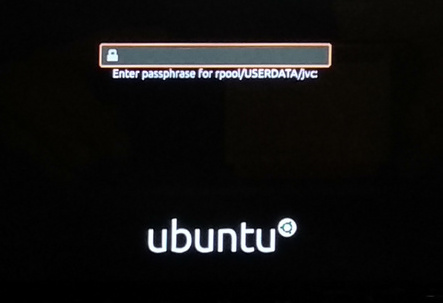
So yes, my home directory was encrypted. Great. But as expected, I now have to enter my password twice: Once during boot for unlocking the storage, and then once more for logging in to the system. This is an issue for me in two ways:
- I just dislike having to enter my password twice.
- If my girlfriend should use my computer, then she would not be able to do so without me entering my password at boot time.
Fair enough… most of the time I don’t shut down my computer but only suspends it (like everyone else)… but still…
Step 2: Writing the unlock-mount script
I will just show the script I use here. Assuming that you know how to read Bash, the content is fairly clear (and comments are provided in the code). The properties canmount and dk.talldanestale.automount:user will be explained in step 4.
Save the script to /sbin/mount-zfs-homedir and remember to set the executable bit:
#!/bin/bash
set -eu
# Password is given to us via stdin, save it in a variable for later
PASS=$(cat -)
# List all zfs volumes, listing the *local* value of the property canmount.
zfs get canmount -s local -H -o name,value | while read volname canmount; do
# Filter on canmount == 'noauto'. Filesystems marked 'noauto' can be mounted,
# but is not done so automatically during boot.
[[ $canmount = 'noauto' ]] || continue
# Filter on user property dk.talldanestale.automount:user. It should match
# the user that we are logging in as ($PAM_USER)
user=$(zfs get dk.talldanestale.automount:user -s local -H -o value $volname)
[[ $user = $PAM_USER ]] || continue
# Unlock and mount the volume
zfs load-key "$volname" <<< "$PASS" || continue
zfs mount "$volname" || true # ignore erros
done
Debug tip: You can change set -eu to set -eux to make Bash print out all commands as it is executing the script. In order to see the output, you also need to enable debug output in PAM. See next step.
Note: The use of here-string (the <<< operator) instead of echo "$PASS" | ... prevents your password from being written to the log.
Step 3: Set up PAM to use the Bash script.
The approach is to use the PAM module pam_exec.so to pass on the user password to an unlock-script.
The PAM configuration is a set of files residing in /etc/pam.d/. Some files are service specific3i.e. named after the service it is relevant to while others are shared (included) by the other files. On my Ubuntu system there is a file named /etc/pam.d/common-auth that is included from other services that enable users to login4console login, gdm, ssh etc.. This is the place to add the pam_exec.so hook:
- Edit the file
/etc/pam.d/common-auth: - Add the line:
auth optional pam_exec.so expose_authtok /sbin/mount-zfs-homedirThis line can be read as:
- Set up a hook for user authentication (
auth) … - that is allowed to fail (
optional) … - to run a command (
pam_exec) … - that exposes the password through stdin (
expose_authtok). - The command to run is
mount-zfs-homedir.
That is it for PAM configuration.
Debug tip: If you need to debug things, then adding debug log=/tmp/file.log will help you. Example:auth optional pam_exec.so expose_authtok debug log=/tmp/file.log /sbin/mount-zfs-homedir
Step 4: Configure properties on our ZFS volume.
The unlock script used two properties, which we will explain and configure here:
Property canmount
The first (substantial) line of the script lists datasets in the zfs pool along with the canmount property. We filter on values noauto. The noauto value indicates to the system that it should not be auto-mounted during boot (which is the trigger for the password prompt at boot).
In other words: We need to mark our home directory not to be auto-mounted at boot:
sudo zfs set canmount=noauto rpool/USERDATA/jvc_enc
Property dk.talldanestale.automount:user
Next, the script is filtering on a custom property dk.talldanestale.automount:user which I use to indicate to which user this dataset (filesystem) belongs. I do not want to attempt to mount my girlfriend’s home directory using my password.
The property is one I created. The ZFS states that user properties must contain a ‘:’, but otherwise is free to choose. I like the concept of prepending (semi) global properties with organization identifier. Hence the dk.talldanestale.
To set the property, execute:
sudo zfs set dk.talldanestale.automount:user=jvc rpool/USERDATA/jvc_encThat’s it. I hope it helps you on your journey.
Addendum: zsys automatic snapshots
One of the really nice features of ZFS is the snapshot feature. It enables you to, well, take a snapshot on the fly of the filesystem for later use. Later use could be…
- mounting (read-only) for retrieving lost files.
- rolling back system after a failed upgrade or install of a driver.
- a precautionary backup when you are about to perform actions that could potentially result in data loss.
On Ubuntu there is a hook set up in the apt/dpkg configuration that (via zsys) creates a snapshot of the machine just before installing packages. Unfortunately something broke when I created my new home directory and now I would get the error Couldn't find any association for the user dataset ....
Not knowing anything about zsys or how this was set up on Ubuntu I went spelunking and found the property com.ubuntu.zsys:bootfs-datasets that was set on my old home dataset but (of course) not on my new. So… copying this property fixed the issue:
VAL=$(zfs get com.ubuntu.zsys:bootfs-datasets rpool/USERDATA/jvc_tdssc -H -ovalue) sudo zfs set com.ubuntu.zsys:bootfs-datasets=$VAL rpool/USERDATA/jvc_enc
All done. Hope it helped you as well 🙂
Update March 2021
It turns out that this step (setting com.ubuntu.zsys:bootfs-datasets) is not needed only for snapshotting your new home directory, but also to prevent zsys from deleting it – as happened to Mikhail in the comments below.
It turns out that:
zsysconsiders the namespaceUSERDATAto be theirs.- If a dataset is in that namespace, it will try to manage it.
- Managing means e.g. taking automatic snapshots of it, but it also means deleting “left over” data sets.
- If a dataset is in namespace
USERDATAbut does not have the propertycom.ubuntu.zsys:bootfs-datasets, thenzsysconsiders it eligible for deletion!
Mikhail filed a bug report to the zsys project. My stance is that it (zsys) should never delete a filesystem unless they are absolute sure that they created it and it is no longer needed. For instance, they could tag a dataset with a zsys-named property (not just namespace USERDATA) and only manage / delete those datasets. Deleting a filesystem on the basis of a missing property is (imho) a bug.
In other words:
- Remember to tag the new dataset!
- If you don’t want it to be managed (i.e. automatic snapshots), choose another namespace than
USERDATA.
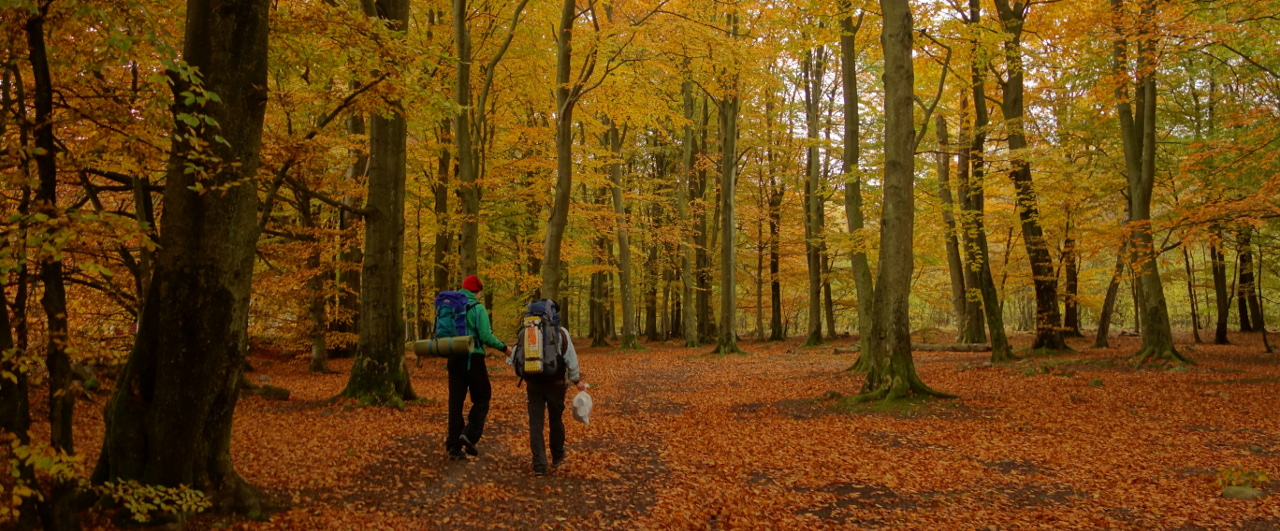
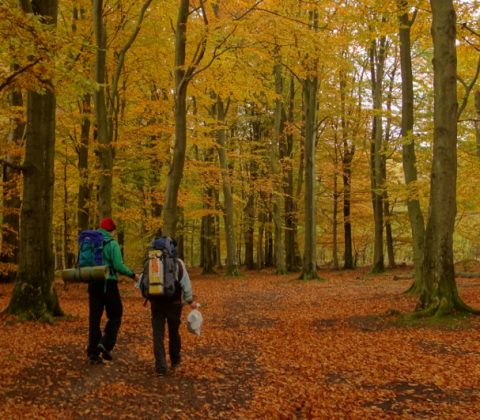
Shelters and hiking trips on Fyn
I was planning a small hiking trip with my girlfriend and a couple of friends when I got a little bit frustrated with the availability of map data for Danish hiking routes and sleeping facilities. Yes! We have great resources, but they all (two I will mention here) have some limitations.
Ud-i-naturen is a great overview of *everything* you could need going out into nature. The trouble is: It is a webpage and as such is not a great user experience on a small touch screen (phone) when you are hiking.
The Shelter App fixes that by being a native app, but it has another problem: It is only showing sleeping facilities and thus you need to correlate the map in the app with either another hiking map app, or a paper map.
What do I want instead?
Well, I have been enjoying Skåneleden for some years while living in Copenhagen. At that time, it was possible to download a KML file with all the tracks and shelters. This, I could import in my Locus Map app and vupti, I would have everything I needed in one view, offline (including map tiles).
Today, Skåneleden has changed strategy a bit. Instead of downloading all of the data, they created an online hiking trip planner – including planning of public transportation out and home. Impressive. You select the tracks you plan to hike, can see distances of each track, filter on difficult level and more. And in the end, you download it as a gpsx file to whatever device you like.
I still prefer the “raw” kml file (or gpsx or ???); anything better than a heavy and clumsy webpage. Yes I know… Smartphones are getting more… powerful (not smart) and internet is more ubiquitous, but still… when hiking, I like the idea of being offline – if nothing else, just to save battery life 😉
Hiking trips on Fyn
So, as I said… I was planning my hiking trip and got frustrated with the situation. I stumbled upon Book-en-shelter where you can get a map of hiking routes on Southern Fyn along with mapping of shelters (across all of Fyn) – but again… no download.
The itchy part for we was… the data is there. You can show/hide tracks and click on shelter locations.
So I took a look at the source and extracted the data into two gpx-files. One for the tracks, and one for the shelters. So… if you like me, like to carry your tracks offline, here is to you:
Note: The data was extracted April 2020. They are not updated here on this site. Please check Book-en-shelter for latest info.
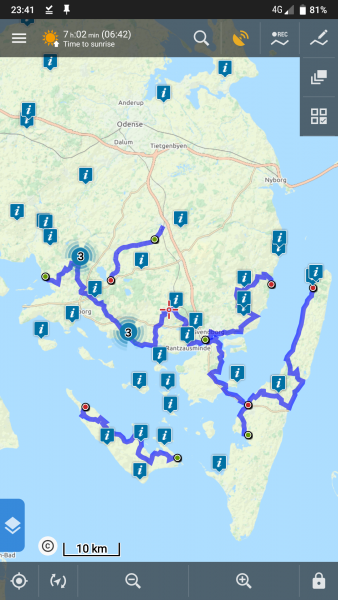
Ps.: If you would like more detailed descriptions of the routes, you can find it on VisitFyn.
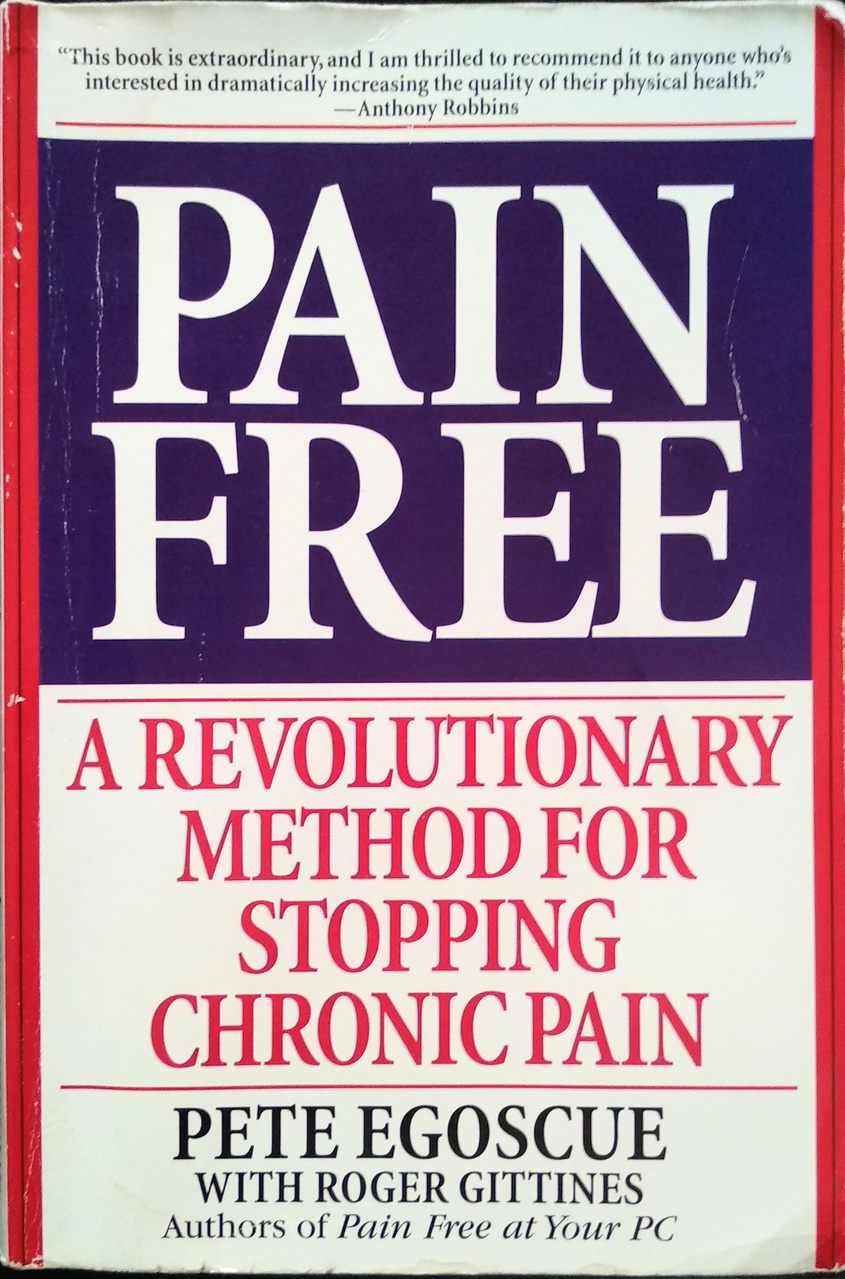
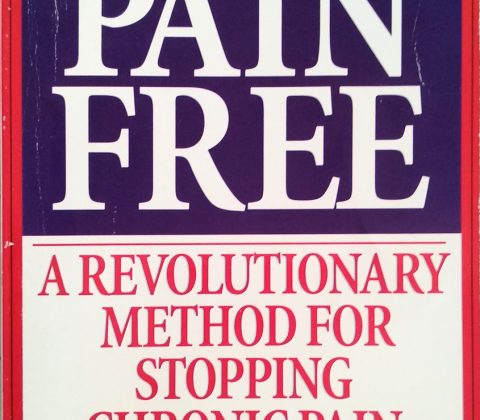
Pain Free – non-disclaimer
I was browsing through Pete Egoscue’s book Pain Free before lending it out to a friend. I feel upon his non-disclaimer and it just resonated with me (again) that I had to share it 🙂
As he writes:
Health care starts with personal responsibility. Any disclaimer that suggests otherwise does a great disservice.
Pete Egoscue – Pain Free
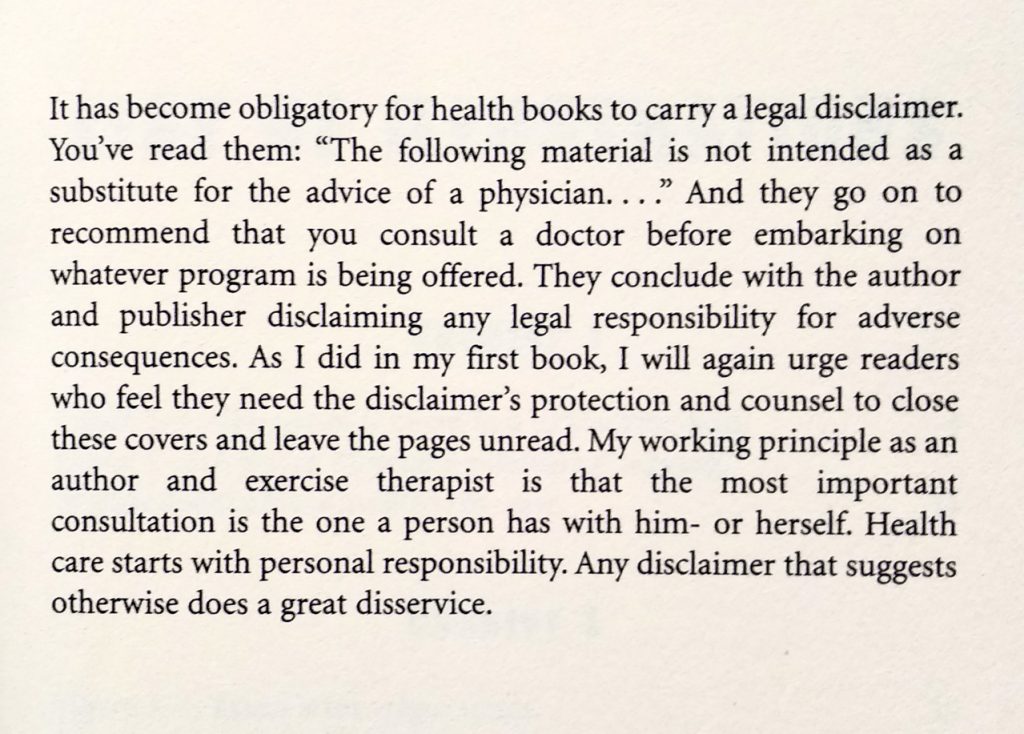
As a small bonus, here is his Eight Laws of Physical Health:

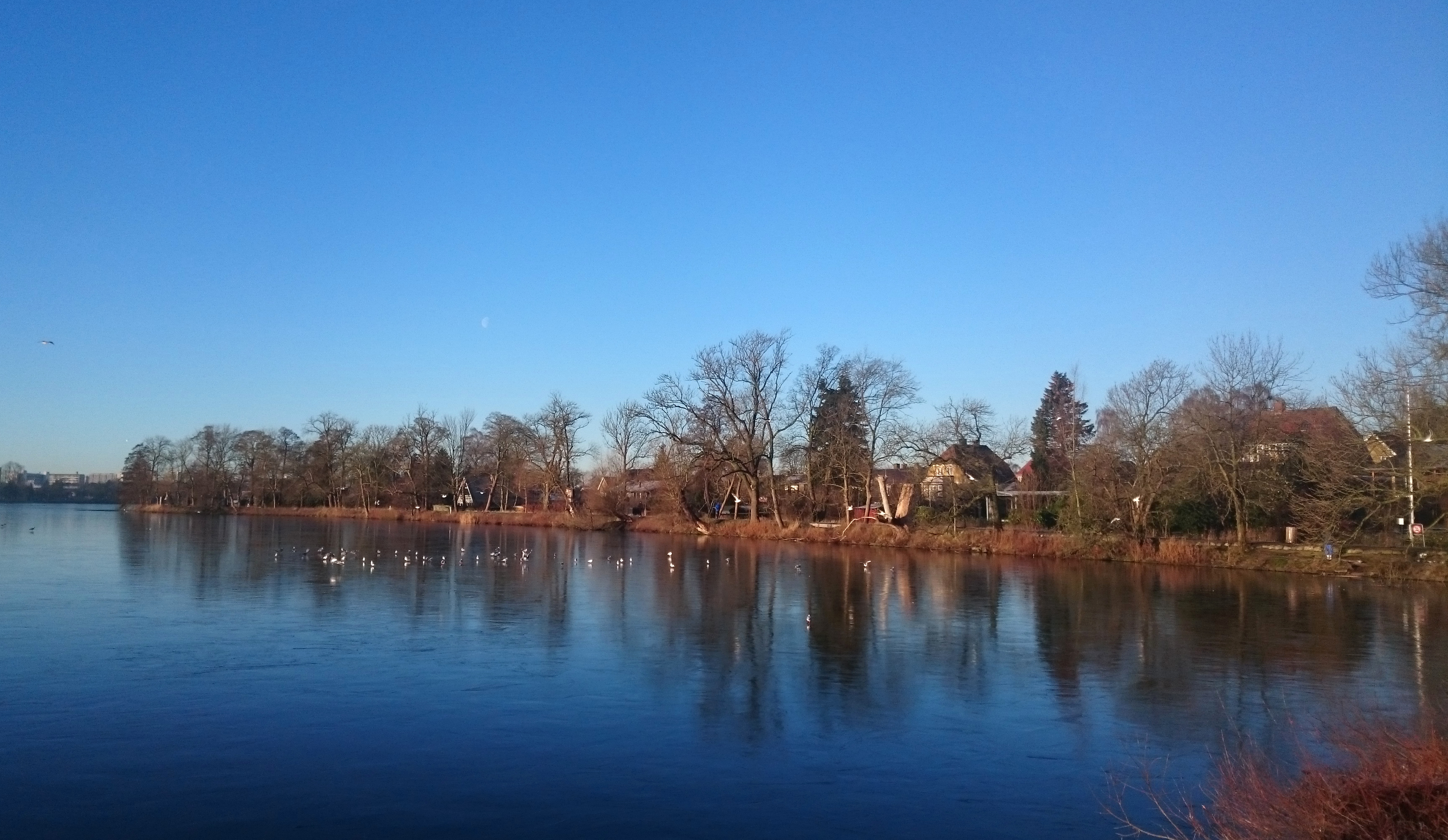
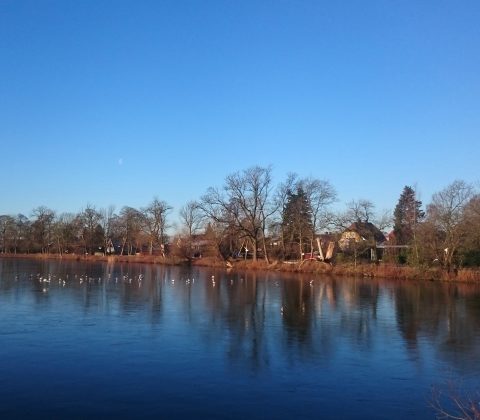
A beautiful beautiful frosty day
It is a beautiful beautiful frosty day in Copenhagen. I am biking to my garage in Vanløse and thinking… What the båt am I doing?
I am on my way to Thailand and the butterflies are flapping their wings in my stomach, giving me doubts to whether to go forward or not. Since last time we “talked” together, I have completed the Teacher Training at Partner Acrobatics (it was awesome), completed the sale of my apartment, and travelled a bit around Europe. Time has passed by really quick and there has seldom been a boring moment. All good! Looking back, there are lots of great stuff to remember…
- Partner Acrobatics in Spain 🙂
- Hot tubbing in Sweden in autumn colours 🙂
- Autumn acro in Nijmegen – was amazing.
- Teaching my first weekend workshop in Stockholm. Thank you Anna for your support and help 🙂
- Visiting Belgium, Holland, and Vienna – meeting awesome new friends everywhere.
- Trip to Vesterhavet (Northern sea).
- Awesome New Years acro party 🙂
- … and a lot more.
But it still… people have been curious and have asked What are you going to Thailand for? And I have not quite been able to answer them. It has always been a bit vague and this has also made me doubt myself. Is it the right thing I am doing? Being in this transition phase of breaking up my life to go travelling (or set down in Århus later) has opened my eyes (even more) for all the good things and friends I am leaving behind in Copenhagen.
So… here comes a wish list for my up-coming months… putting them in writing may help me keep a focus on them as I continue my travels. They are in no particular order; I think I will try to keep an open mind as opportunities present themselves 🙂
- Acroyoga and acrobatics: Playing around, creating new stuff, making videos, photos, teaching. All is fun! For starters, I am going to join Partner Acrobatics again in Thailand.
- Contact improvisation is still on my todo-list. I have been meeting some wonderful people in this world, but it is still on the edge of my comfort zone – and that, I think, is worth challenging a bit.
- Yoga and meditation is also something I would like to explore more. It is two very deep topics of life, and it would be interesting to see how much of that I can embrace with my engineering mind 😉
- Future plans. What do I want to work with in the future? How will I make a living coming back to Denmark? This is a big big topic and I don’t expect to get a clear all-set plan. I do, however, feel that I would like to utilize my engineering background in one form or another, but how? I don’t know. Let’s break it down and just try to figure out a starting point 🙂
- Computer work. People may ask why do I want to sit behind a computer while travelling? Well, the answer is, that this is where I have time. I have a couple of open source software projects that I would like to contribute to. Move Copenhagen will also take a few hours of my time this year. I would love to get into photography again – and this also takes more hours behind the screen than I think (most) people think. And lastly, this may also be a good time for me to brush up on my Machine Learning skills and try out if that is what I would like to work with in the future 🙂
Recently I heard a podcast starring Tim Ferris1. It was an hour long podcast about (elements of) his life, his depressions, and how he handled them. Some half-way through the podcast, he presented a tool he called fear setting (as opposed to goal setting). Whenever he would run into a situation where he was contemplating doing some action (such as me quitting my job and leaving Cph) but he had fears of doing it, he would use this tool. The basic idea is to
- Write down your fears as concrete as possible, and come up with ways to mitigate them.
- Write down the benefits of doing the action.
- Write down the costs of inaction – i.e. the cost of status quo.
The last point is important and is what resonated with me.
It is not that I have used the tool as such, but it is actually what gave me the courage to start this journey. When I moved to Copenhagen (Lyngy) it was to get an education and then go back (?) to Jutland. Surprise… didn’t happen. Long story short; I stayed here, got a job and a (busy) life.
Last spring (when I made the decision) I was at a point where I felt a bit stuck in my life. Without going into details with my life here, I realised that I had been in the Copenhagen area for 14 years and barely realising it! I had heaps of good experiences and memories in Copenhagen and there is lots of stuff that I do like about Copenhagen – I just don’t want to stay here forever. My job was starting a new project (with me as one of the main architects) and I felt that I should stay at least 3 years for it to make sense for me. Adding the 3 years to my (then) recent realisation of 14 years in Copenhagen made me feel that if I did not move now, then I would never move. And that was a scary thought.
When I listened to Tim Ferris talking about Fear Setting, I realised that this was my 3rd page of the tool. The cost of staying in Copenhagen was so big that I could not do nothing. And that is why I have to go.
How long will I be in Thailand? When will I return to Dk? Good questions. I just hope that I will be seeing all my friends in Copenhagen (and the rest of the world) when the time comes. An old quote got stuck in my mind….
How lucky I am to have known someone and something that saying goodbye is so damned awful.
Take care 🙂
- Here is the Design Matters with Tim Ferris podcast. If you are just curious about the Fear Setting tool, you can see Tim talk about it in his TED talk Why you should define your fears instead of your goals – a bit hidden among some wrappings of stoicism. ↩
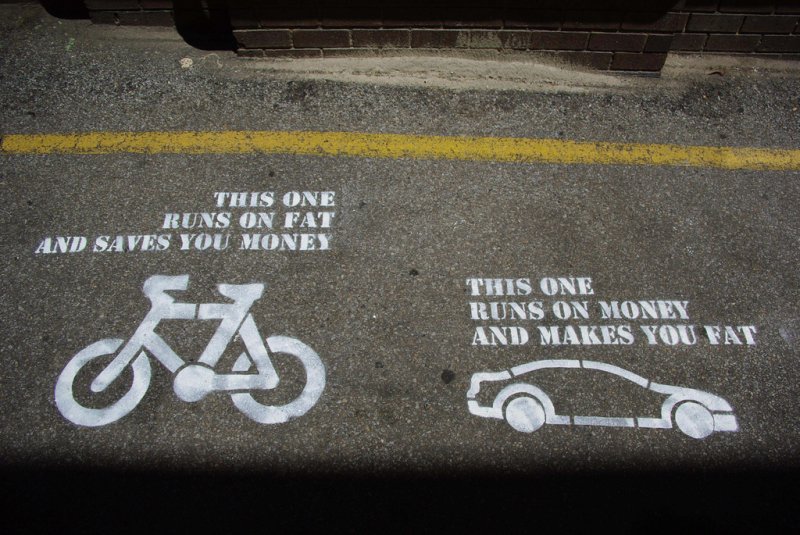
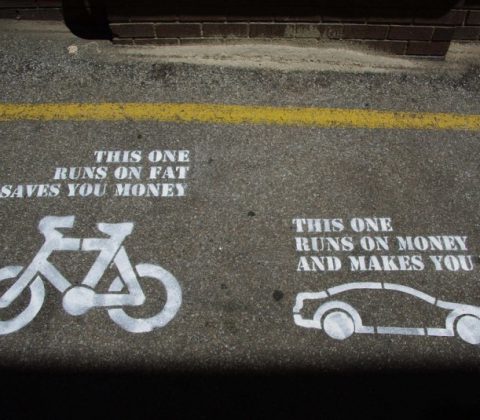
Dreaming of a car free Copenhagen
I’m dreaming of a car free Copenhagen.
I don’t believe in New Year resolutions or waiting for “right moments” to change your life. If you feel something in your life needs a change, the right moment is often now. Now, while you have the thought and the motivation. Take the first step, make a resolution Stick to it. And also, seek help and support from your friends.
But still, I would like to take this opportunity of going into the year 2018 to make a daring proposition:
Make central Copenhagen completely car free!
Well… except for a few minor exceptions – but let’s take that later.
I have been living in Copenhagen (Nørrebro) for 7 years, and (before that) in the area (Lyngby / Holte) for another 7. It has been fun. It has also been a mixed blessing. When I moved to Lyngby it was to get an education and then back to Jutland, but then something kept me here. At first, there was a girl who’s big blue eyes got wet if I mentioned myself and Jutland in the same sentence1. Then there was work. Lastly (and most importantly) my climbing, acroyoga, and friends. I like it a lot.
But there is also something that was always a bit off for me. I never felt completely home. I missed the open space. I missed the clean air. When I bike through Copenhagen (I bike to almost everything) the dirt in the air and the smell of the fumes are not a pleasant experience. State of Green will tell you that “Copenhagen no. [is] 2 in Europe for Air Quality” (2015) – but then again, State of Green is founded by (among others) the Danish government, so of course they will tell you the good story. Clean Air Europe had in 2014 a number of recommendations for Denmark which (on one hand) is not so unusual but (on the other hand) disagrees a bit with the rosy image provided by State of Green.
So humour me a bit and join on this thought experiment of making Copenhagen a really green city2. First question would be…
How would people get around?
Short answer: Bicycles.
I would argue that Copenhagen is such a small city, that most people (not all) would be able to get around in their day to day business using bicycles. The Christiana bike and its competitors has been around long and proved themselves useful for transportation of a various of things. With the “new” electric bikes, it makes biking more accessible also to the group people not so eager to get the daily exercise while commuting – or just don’t have the capabilities for it any-more.
Other alternatives is (of course) walking 🙂 and public transportation. I will touch a bit on the later topic later in this essay.

Source: Stig Nygaard on Flickr.
Benefits
Now, let’s have a look at some of the benefits of having a car free city. There are a few that immediately come to my mind…
- Space
First thing, I think you will notice, is the space. What if all the space we use for roads could be open to the public? To pedestrians. To bicycles. To green areas. To cosy corners where Copenhageners could enjoy the outdoor life.Imagine big 4 lane (2 in each direction) roads being reduced to a single one way lane (for necessity traffic) and the rest given out to bicycles. Traffic lights timed for bicycles so that you could stroll with 25km/h through the inner city on your way to work – not stopping for any red light.
Imagine small gardens (with clean air so you could actually eat the stuff you grow3) at every street corner. Green areas to relax on. Petanque courts. Areas for slackline, parkour, skating, basketball, etc. Barbecue grills, hammocks, stages for live music and dancing. I kind of feel my imagination is a little bit limited right now… but the essential idea is… why restrict our social life to parks? Why not have it just outside our front door where we can meet our neighbours and connect with each-other.
What is your favourite outdoor activity? Why not have that outside your front door?
- Air quality
Under the assumption that most of the air pollution comes from traffic, removing (most of) the traffic would remove (most of) the air pollution. Simple.Imagine running through the city passing by local communal gardens with flowers and vegetables, and small patches of green with kids and dogs playing, and actually feel refreshed by the air that you breathe in.
In reality, the picture is a bit more complicated, though. Some of the air pollution also comes externally, from the environment outside Copenhagen. How much? I don’t know. And I would not know where to find such data. Also, some traffic need to be allowed in the city… see later in this essay for thoughts on that.
- Improved health
There are two sources of improved health. First, the current air pollution is estimated to cause between 800 to 1100 yearly premature deaths4. Thus, reducing the air pollution, would reduce this number as well.Secondly, the exercise itself will increase the health of the population (for those choosing the bike to work). This is a statement with modification to the individual. If it is a marathon runner that takes daily runs and other physical activity, and he/she has only 5 minutes to work, then it may not matter so much. But if it is otherwise an inactive person and he/she has perhaps 15 minutes to work (by bike), then the daily exercise will most likely increase that person’s health. The WHO recommends a 150 minutes of physical activity per week – corresponding to e.g. 5 times half an hour a week.
- Enjoy the silence
With all that traffic gone, I imagine there is going to be a lot of silence in Copenhagen. Actually, if some the free space were to be given back to parks and green area, maybe we will get more birds (other than pigeons and magpies) and people will open up their windows to hear them sing 🙂I also imagine that this silence will also contribute to lower stress levels of the general population – but that’s purely speculation on my side 😉
- Fewer and smaller traffic accidents
According to the Statistics Denmark there were 255 injured or fatalities in Copenhagen and Frederiksberg in 2016 involving either bicycles or pedestrians. While this number has been on a decline for almost 20 years and it is low (compared to the more hidden number of 800 to 1100 premature deaths due to bad air quality mentioned above) it is still a number that is worth mentioning. One might expect this number to go down, although not completely disappear, and perhaps accidents involving bikes and pedestrians (bikes running into other bikes or pedestrians) might increase. I would assume, though, that the injuries gained here would be smaller than those we see with encounter from the cars.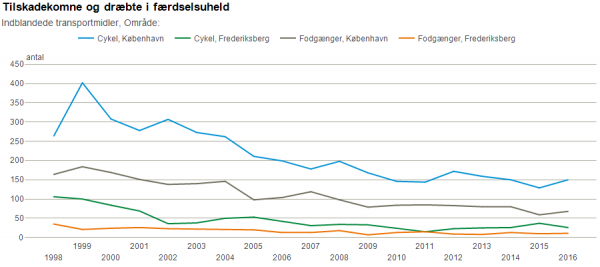
Source: Statistics Denmark.
- Better public transportation
A car free city does not involve free from buses. Quite the opposite, actually. Buses (as part of the public transportation system) is an important contribution to make it easy for those living in the city to get around without a bike. Whether the physical capabilities do not merit riding a bike, or if one needs to transport something (and does not have a cargo bike), or there is simply bad weather about, the public transportation should be a great alternative in those situations.While lots of the space in Copenhagen will be taken away from car roads and given to bicycle roads, I think that the space preserved to motorised traffic (such as buses) will be much less congested. The result will be that more buses can be instated and they can move quicker around. I have personally experienced (more than once) walking down Vesterbrogade and still be faster than the 4A bus servicing that street.
Another example is that I over the years have developed a saying – a small paraphrase of the saying misfortune seldom comes alone:
An A-bus seldom comes alone.
A-buses are the inner city buses in Copenhagen and are usually scheduled to arrive every 5th or 10th minute (depending on time of day) but with no fixed timetable as such. You would just know, that when you go down to the bus stop, you would maximum have to wait 5 minutes. What I often would see was (biking in the city) 2 or 3 A-buses (same line) driving head to tail of each-other. I would not pretend to understand it fully, but I presume that the traffic congestion in some city parts combined with bus-only lanes in other city parts make the buses tail up together.
That is current the state of central Copenhagen traffic situation – at least at certain hours.
- Tourists
So this point may not be seen as a benefit by all people. There are a lot of tourists in Copenhagen – which in general I think is a good thing – and if Copenhagen became a (near) car free city, that would certainly attract even more tourist. That is just my hunch… I might be wrong, though.
But… how…?
Yes… how would it be done?
I personally prefer the solution where cars (with exceptions) are banned from the city. It should be equal to everybody that you are not allowed to drive your car in the city… CEOs as well as cleaning ladies (and men), doctors as well as nurses, engineers as well as kindergarten teachers, politicians as well grass root activists.
When people (politicians?) talk about solutions such as a payment ring or (artificial) high parking fees, or other solutions, I can’t help but see the same characteristic in them: They all allow people that are better off with money to continue their habits, while people with less strong income must adapt.
Especially the member of the parliament should go first and skip their cars to work. I believe in dogfooding and find it absolutely toe-curling when people don’t use their own product or don’t follow the laws they vote for (or add convenient exceptions to it). You can say it is a good sign that it fails me (at the writing moment) to find good examples of non-doogfooding in Danish politics (or maybe just bad memory) but I still think it would suit the parliament to be in the front line 🙂
So, we would ban (most) cars in Copenhagen. Reduce all roads to either one way (one lane) streets (for cars only) or to “pedestrian streets” where (the excepted) cars could drive – but with pedestrians and bicycles having the right of way. In its basic idea, it is that simple!
Exceptions
But as I have mentioned a couple of times, there are some (obvious) exceptions to this simple rule. The number of exceptions should be kept at a minimal (again, dogfooding), but to list the ones I can think of…
- Ambulances, police, fire department
Need I say more? Important part of our infrastructure as a society and thus exempt from the ban.One could note, though, that perhaps while most cars are banned from the city, the need for police cars could perhaps be swapped out by police on motorbikes or, dare I suggest, on push bikes as well 🙂
Some might even get nostalgic and eye an opportunity for having the police riding horses again 😀
- Public transportation buses
As mentioned before, public transportation should be an attractive alternative for those not able to or not wanting to bike and walk around the city. Buses are an important part of that infrastructure and is (of course) exempt from the ban. - Goods delivery
Delivery of goods is also important and thus should be exempt – though perhaps with a minor twist.While my personal impression is that there are a lot fewer trucks in Copenhagen (goods delivery) than private cars it also feels a bit, hm, broad to just exempt all trucks from the ban. So perhaps exempted trucks are trucks that have a specific delivery or pick-up appointment, and then only on weekdays from 10am to 2pm. I think there are already similar rules in Copenhagen, so perhaps the idea is not so foreign.
- Diplomatic visits
Would I get away with suggesting that diplomatic visits and head of states would not enter Copenhagen by car? That they either are received outside Copenhagen or experience the Danish transportation culture first hand? Probably not. Dammit. 😀 - The queen and the royal family
Though I would love to see members of the royal family riding bikes through the streets of Copenhagen, I only barely dare to think the thought, to say nothing of suggesting it 😮 - Services that are dependent on vans / trucks / cars
A brief (and not complete) example list of this could be craftsmen (electricians, plumbers, carpenters, etc.), renovation services, construction services, road services, food service (for e.g. elderly people).How about delivery services for private addresses? Don’t quite know… on one hand the postage system has (for many years) shown that small packages clearly can be delivered using bicycles. On the other hand, it should be possible to get that double bed or washing machine delivered without overloading the cargo bike you borrowed from your neighbour.
- Some form of car sharing
Sometimes life just becomes much more easy if you have a car. Say you are a band and got a gig at the local pub, you don’t want to hire a moving crew to transport your gear: Too expensive and you feel better by taking good care of your instruments yourself. Here, perhaps, using the local car sharing service (multiple already exist in Cph) could be an option. The trick is, though, to somehow regulate this use in order not just flood Cph with car sharing cars now we just got rid of all the personal cars. How is that best done? I don’t know 🙁 - Taxis?
Yes. No. Maybe. Don’t know. What about bicycle taxis…?
But… how…? – Take 2
There are still a lot of open questions… one that immediately comes to mind is…
How about long distance commuters? People that either live in Copenhagen and work outside, or live outside and work inside. I kind of imagined that the latter would perhaps drive to the “no car barrier”, park their car there, and then take the public transportation into the city. I think that was actually part of the original 5 finger plan for Copenhagen. For the former, I would imagine the opposite pattern… you take the public transportation out of town, then find your car in your garage or, even better, use one of cars from the “incoming” people in a car sharing form.
Long distance travels? Say you have family in Jutlan but live in Copenhagen. You would like to have a car and use it to go visit your family. You could have it parked in a garage outside the car-free zone, but perhaps you need a bit of luggage with you when you go? Perhaps you have kids and suddenly the situation kind of requires a car. So clearly, in some cases, it should be possible to enter the car free zone with your car.
How would that work? Just thinking out loud… perhaps if the first 3 entries (per year) into Copenhagen were for free. The next 3 entries would then cost a low fee, say 100kr. The next 3 entries would be doubled in price to 200kr each. For each 3rd entry into Copenhagen the price would be doubled. If the family trip was done once a month, the family would pay 2100kr in fees. Reasonable? Perhaps the fees need to be adjusted. But it is only to illustrate that the careless driver who drives into Copenhagen once each week (using this scheme) would get to pay 26,214,100kr in fees. Ok, so this sounds like a lot, but the idea is that nobody need to drive their car into Copenhagen every week – and if they do, there probably need to be an exception for them.
Long distance visits? Probably same as above. Drive to the car free zone border, take the public transportation from there. Or you get the same 3 first time free scheme as above.
And oh… Electric cars! To make this plan even more green, and for me to accept the necessary cars more easily in Copenhagen, it would be awesome if it were so that all regular motorised traffic in Copenhagen should be electric. Less noise and cleaner for the environment.
By “regular motorised traffic”, I mean all the exempt cases (infrastructure services, buses, goods delivery) mentioned in the previous section. The irregular traffic (e.g. long distance visits in the previous paragraphs) could be exempt from the electric-car requirement. At least for the time being 😉
The last point I’m going to touch upon is… where is the zone going to be?
Well… A good start, I think, could be to take offset in the current environmental zone of Copenhagen:
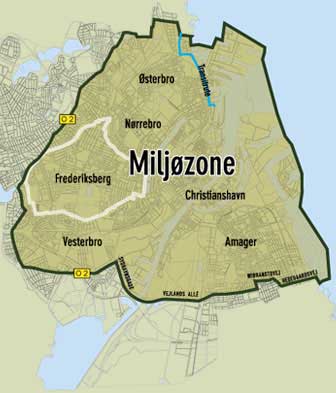
Source: Flush-It.
Perhaps some would argue that the active harbour areas should be excluded from the car free zone in order for it to function properly. Perhaps. Like so many other points in this dream… there are lots of issues that need to be worked out and I don’t have many answers.
But I can always dream, can’t I?
- Curiously enough, she didn’t get wet eyes if I mentioned myself and e.g. Greenland in the same sentence. But I guess, that’s a completely different topic ;-) ↩
- Ok, so making Copenhagen a car free city is not the only thing it takes to make Copenhagen a green city. Other initiatives such as food sharing, using renewable energy, better waste treatment, etc. is also good topics to work on. But this is not for the scope of this little essay. ↩
- We might need to get some fresh soil as well for the gardens… The “ground soil” will take some years and effort to clean up properly as well. ↩
- Again, from the Clean Air Europe report. ↩
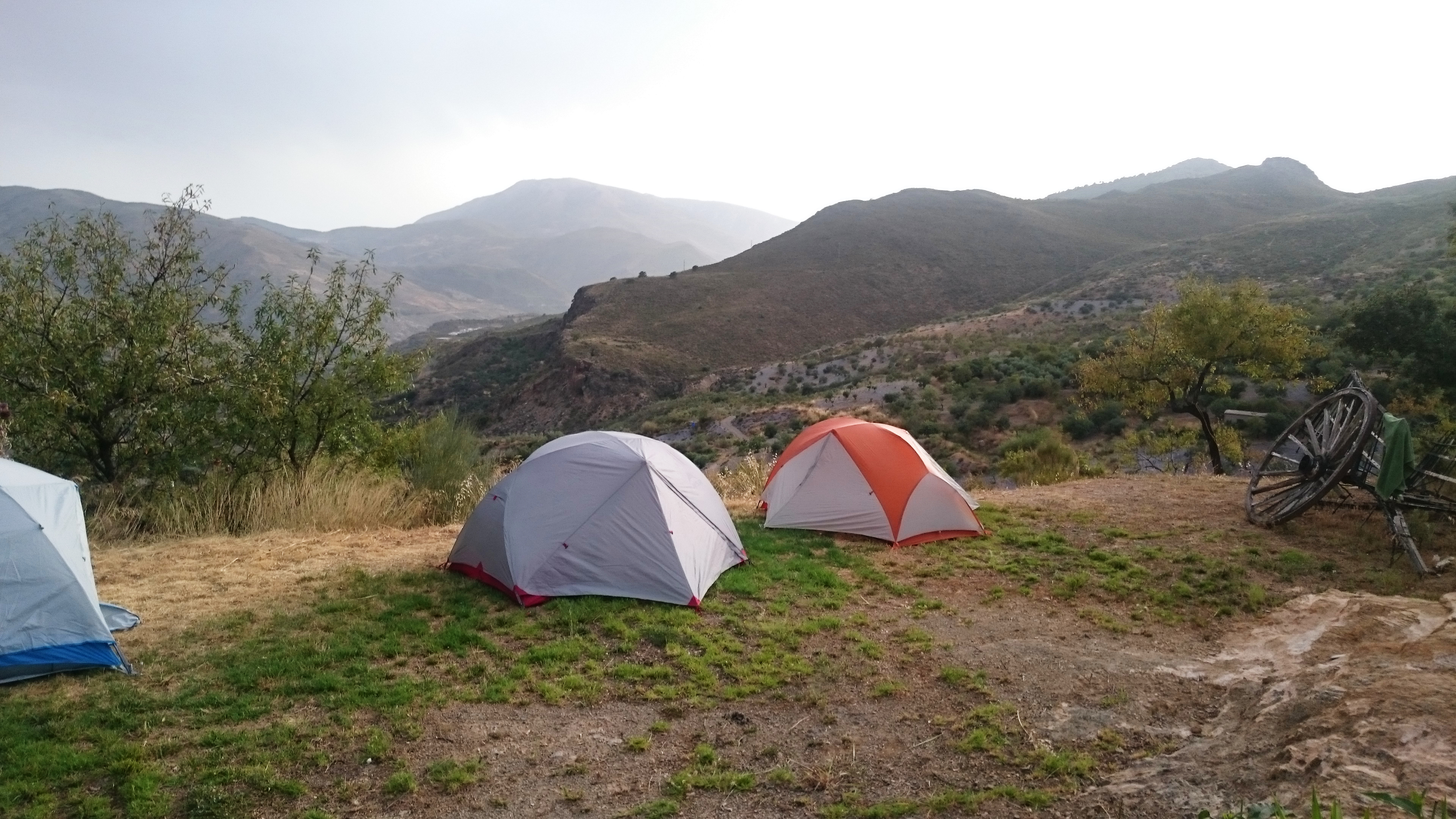
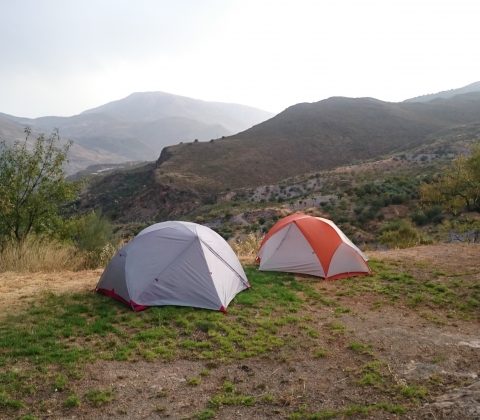
The plan is to not have a plan
As I am writing this, I am sitting in a bus from Madrid to Torvizcón venturing out to new adventures. The trip started yesterday evening with my plane being an hour delayed and before that: My last working day at 3Shape.
Wait, what? You quit your job at 3Shape?
Yes. And am in the process of selling my apartment in Copenhagen as well.
It has been a process for some months now to get this started, and already I have had a number of Wows, Amazing, Wish it was me, and I admire your courage.
My journey to where I am right now actually begun some time back. I mean; the actual decision to quit my job was done late April, start May, but before that I had been contemplating a bit on my life, trying to figure out if I was where I wanted to be. And before that, of course, was my trip to South America which may be seen as the place where I got time to think those thoughts, or just a different reaction to the same desire (already there before the South American trip) – depending on how you view it. So where do you draw the actual line in the sand? I don’t know.
But as I said; it has been a work in progress for some time. Coming back from South America I had a number of dreams and projects that I would like to find time to do in my day to day life. I definitely wanted to do more acroyoga and also teach it – to share the joy that it has brought me. I also wanted to teach climbing again, and planned a fall training course that unfortunately did not fan out. Getting more and more pressed on time (and sleep) with all the things I wanted to do, I also realized that I had not moved out of Copenhagen as I had promised myself (multiple times).
Realizing all this, it became clear to me that if I did not move now, then I might never move, and that was a scary thought. So when people compliment me on the courage to break up, to me it is more a kind of lack of courage to stay1.
So my plans right now are quite slim. I am participating in the Partner Acrobatics Teacher Training here in Spain (hence the bus trip) and after that I am returning to Copenhagen to complete the sale of my apartment. From there on, I have no plans. I do have some vague ideas and hopes for opportunities to arise, perhaps travel a bit, and other “usual” stuff that free birds do. But actual planning…? No.
This, I think, will be the first time in my life where I do not have a plan for my (immediate) future – and that is also an adventure in itself 🙂
- Well, more or less. My perception of what is important and what is the driver behind my decisions change a bit over time. Part of the story is also that I have not managed to establish a family yet. While it is easy to focus on the negative side of that, I decided that I also need to focus on the positive side of that and take advantage of the freedom that comes with that situation. ↩
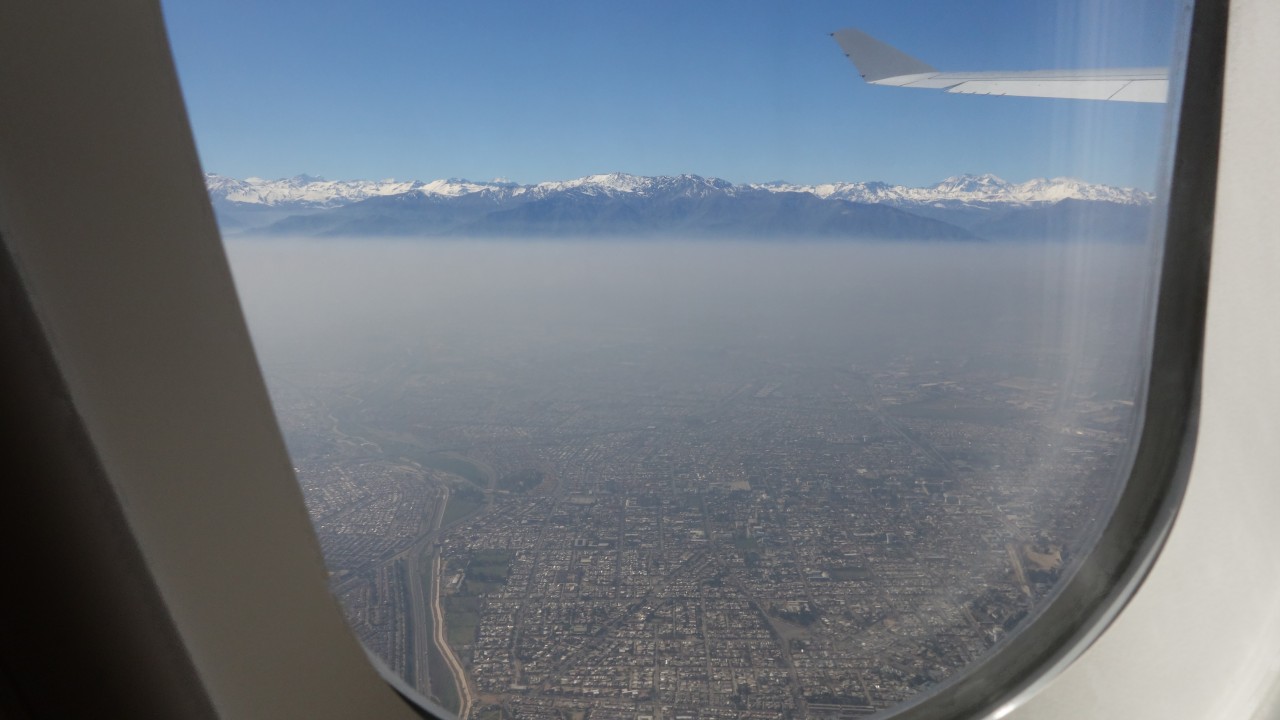
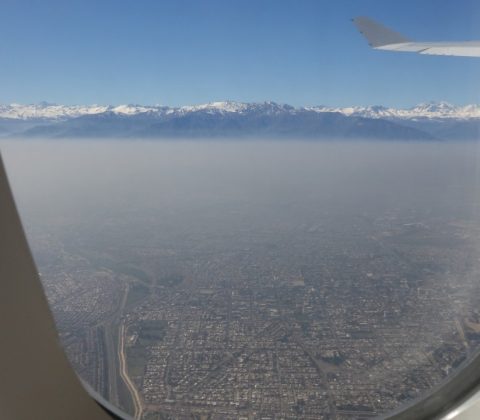
Returning to Santiago and to Denmark
For the impatient: Check out my hobby project Up Next DJ or read my book review of Thinking — Fast and slow. Or just skip down to the photos at the bottom of the page 😉
Arequipa and Iquique
When I left you last, I had to some extend come to and end of my travels — at least in the sense that there was nothing left that I had to see or do. And hence, the rest of the trip has been more relaxed and nothing “big” has really happened. But looking through my photos, something has happened anyway 😮
The trip from Cuzco down to Chile was beautiful. Colca Canyon and Arequipa was beautiful. Santa Catalina Monastery in Arequipa was sooo nice. I loved walking around in there… People say it is a city within a city — and it really is! Lovely garden and so peaceful 🙂
In Chile, I spend 2 weeks in Iquique. I tried to take para-gliding lessons, but I only had one lesson and then the weather changed. So I spend my time relaxing, slacklining on the beach, and working on an old hobby project of mine: Up Next DJ. I guess an open question here would be why would you use your time in South America working on your computer? Well… I guess that was kind of the plan from the beginning. It has been a project that I have wanted to work on for a couple of years — but never found the time. Now, with 6 months out of the calendar, I thought I might find time.
Santiago and Valparaíso
Anyway… Lots of pit stops down along the coastline of Chile: I visited Kat in Antofagasta again. La Serena, Vicuña, and Pisco Elqui was really beautiful as well. I really enjoyed coming out of the desert. It may have it’s beautiful moments, the desert, but I am not so marveled by it as (some) other travelers seem to be. I like the green part more 😉
I had 2½ weeks in Santiago and Viña del Mar / Valparaíso1 catching up with the acroyoga community and selling my bike. I loved Valparaíso; relaxed atmosphere, cozy cafés, beautiful street art — a very colorful city.
Final thoughts?
And now, I am sitting in the airplane somewhere over Argentina contemplating on my journey. I am so happy that I took the time of to live out this adventure! Would I do it again? Yes and no. Right now I feel that I have lived out my desire for traveling solo. On a motorbike. It is just hard to pack up your things every day, or every 2 or 3 days, and move on to the next place. I do like my alone time, but I also like to be able to share experiences with people. You know, a travel buddy with whom you can connect and remember small funny things from your adventure.
And it is difficult really to connect with people when you are on the go. You may find a “long lost friend” and establish strong bonds in a day or two, yes, but most often I think it is something that is build up over time — over shared experiences and beautiful moments. And when you are on the go, it just is difficult to find this time and to commit to this when you think Oh, I will be leaving tomorrow. Or the day after. Also, doesn’t help if you are a bit introvert and a bit picky with whom you spend your time… 😉
And also… The language. I knew almost nothing of Spanish when I embarked, and now…? Well… a bit more, but still not enough to have an interesting (and fluent!) conversation. Was it a problem? Hm… no… I survived! 🙂 Did I miss out? Yes! There were several occasions were I wished I knew more Spanish. On the other hand, I did find it difficult to motivate myself to sit down (in a school) and learn it. Traveling alone, and in hostels, Spanish was not really needed, and there was just so many other interesting options for me to do 🙂
Hm… what else? I am both looking forward to come home, but also sad. There are many people that I wished I had more time to connect to. So many where I want to say “See you again” instead of Goodbye. But I also miss my family and friends in Copenhagen. Lots of fun stuff going on in Denmark as well! And who knows… perhaps some new adventure will pop up 😉
Until then… Take care 🙂
Thinking — Fast and slow
Oh… oh… oh… I almost forgot! During my travels I found time to read the book Thinking — Fast and slow by Daniel Kahneman. An absolute recommendable book to read. Read my review of it and see if it inspires you 😉
- Viña del Mar and Valparaíso are two “minor” cities just west of Santiago at the coast. They are really close and grown together — to me it just seems like one big city. But you know… traditions and a sense of belonging ;-) ↩
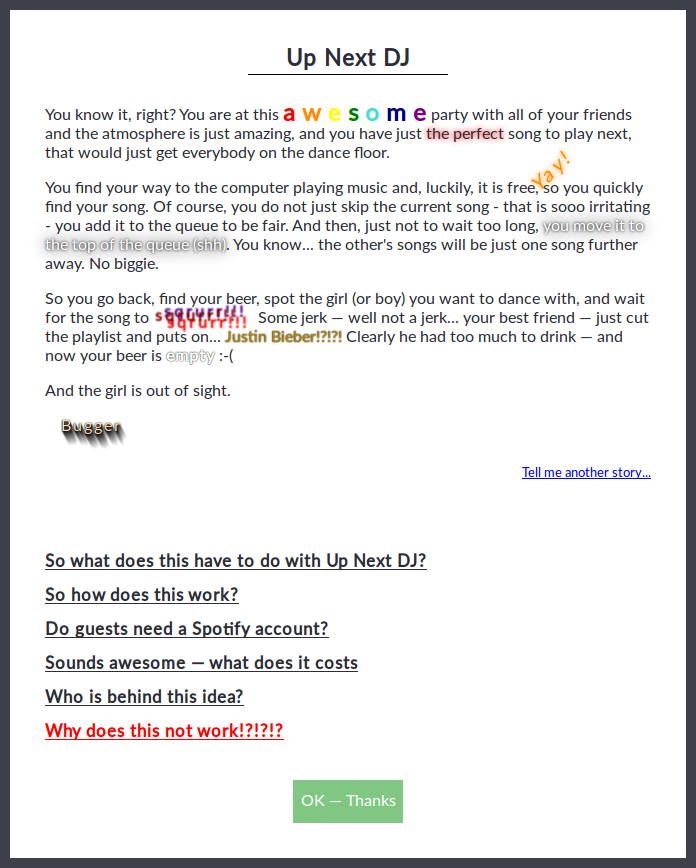
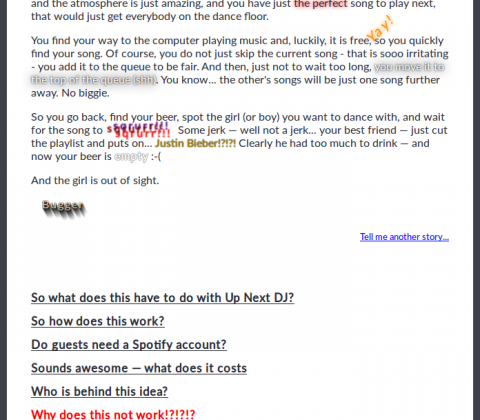
Up Next DJ
So, a couple of years back I was having a great summer in Copenhagen with lots of good parties and good friends. To make the parties really really great, the organizers of the parties also thought Hey, let’s have a DJ! One that will keep the party filled with good music and prevent (drunk) skipping of songs 🙂, and so they hired / invited local DJs in the community to come and play. Great, right?
Well… for me not so great. I did not like the music that much, and my impression from talking with other (potential dancing partner) friends I was not the only one. So I remember walking home, disappointed, from one particular party with two main questions on my mind:
- Why is it more important for the DJ that the beat is fluent and mixes correctly from track to track, than there is people on the dance floor?
- And if the DJ notices that there is no people on the dance floor, why is it that his conclusion is Oh, it must be because the music is not loud enough… and turns up the volume.
Result — at least as I saw it — a great party with great friends, but with music too crappy to dance to, and too loud to have good conversations. And hence, the idea of Up Next DJ was born 🙂
I actually made a prototype of Up Next DJ back then — at that time I called it Virtual DJ — but I did not have the time to develop it further and it stayed dormant a few years. Now, while traveling in South America, I took my time to develop it a bit further. The plan (at least initially) is to get it to be a semi-mature service that people is able to use. Where it goes from there, I do not know 🙂
If you would like to know more, or just be kept updated, please visit Up Next DJ or write me a mail at contact – at – upnext – dot – dj.
Note: At the time of writing this, the current state of the project is still in development. If you want to become a beta tester (when time comes) or if you want to join the project (really appreciated skills would be Android or iOS app development, web UI design, graphics design) please also write to the above mentioned address.


